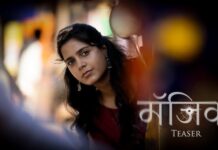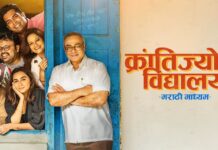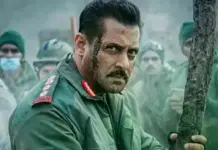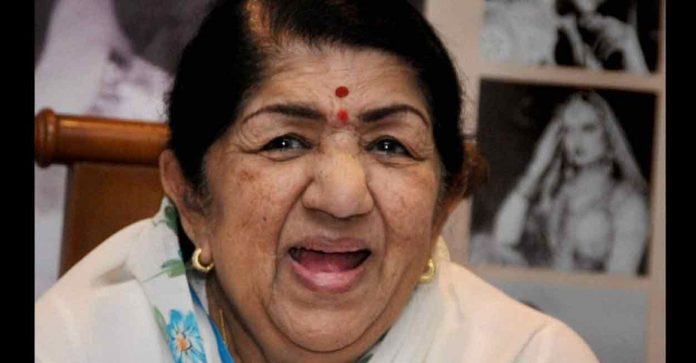Not just the world of Indian film music but the film industry itself lost one of its strongest pillars today (6th February) at 8.12 a.m. in the death of veteran and celebrated singer Lata Mangeshkar at Breach Candy Hospital in Bombay at the age of 92. It all began with her testing positive for COVID-19 on 8th January and ended with leaving her countless fans across continents mourning and grieving her departure. She is survived by three sisters (Usha Mangeshkar, Asha Bhosle, Meena Khadikar) and a brother (Hridaynath Mangeshkar).
Lata’s contribution to hit, super-hit and blockbuster films was immense. With music being an integral part of Hindi and Indian films, her golden voice embellished many a hit song, which, in turn, contributed in no small measure to the box-office success of films.
The name given to Lata at birth was Hema. Hema Hardikar went on to become famous as Lata Mangeshkar after she adopted the new name, by which time her father, Marathi stage actor-singer Dinanath Mangeshkar, had adopted Mangeshkar as the surname as they hailed from Mangeshi, a village in Goa.
BEFITTING FAREWELL… NATIONAL MOURNING
Deservedly, the queen of melody was given a farewell befitting her achievements and stature. She was cremated with full state honours. Two days have been declared as days of national mourning by the government of India. The national flag on all government buildings across India will fly at half mast for two days. Maharashtra, the state in which Lata made history with her songs, has declared tomorrow (7th) as a public holiday as a mark of respect to her.
Lata Mangeshkar’s mortal remains were kept at Shivaji Park for two hours today for the public to pay their last respects. There was a sea of humanity which had gathered there to have a glimpse of the lady with the golden voice in her final journey. Prime minister Narendra Modi specially flew from Delhi to Bombay and went straight to Shivaji Park to pay his last respects. The industry people as also politicians came in large numbers at Shivaji Park where she was cremated. Hridaynath lit the pyre.
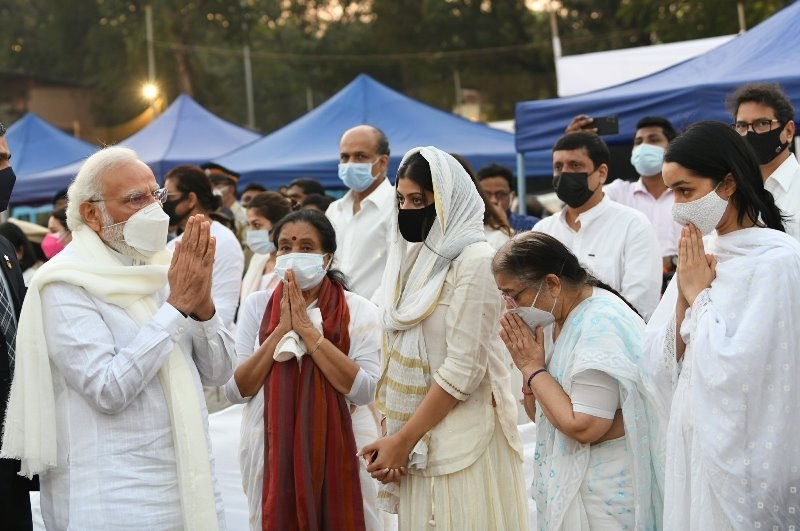
CHILD PRODIGY
For a young girl who debuted as a singer at the age of 13 amidst rejections and comments like “her voice is too thin”, Lata proved her detractors wrong and went on to become the biggest singer India has ever seen. Just like she proved right, as a child, at a concert in Solapur when she told her father that she would win more accolades than him at their very first performance together on stage. She insisted on sharing the stage with her father who was initially reluctant but gave in ultimately. That she won encomiums even at a tender age could be expected because she had an ear for picking up the smallest of nuances in singing from a very young age. Why, as a child, she rushed in to correct teenaged Chandrakant Gokhale, who later became a famous actor but was then her father’s student in singing, when she heard him strike a wrong note as her father had stepped out for a few minutes. Lata caught the mistake even while she was playing in the verandah, rushed in and sang the note herself for Chandrakant to understand. It is said that Dinanath had tears in his eyes as he arrived just then and heard his daughter doing exactly what he would’ve done! Lata would have, perhaps, become a classical singer if her father had not died when she was just 13 because he would’ve wanted it that way. As children, Dinanath Mangeshkar’s children were not allowed to use lipstick or cosmetics because he wanted them to lead simple lives and concentrate on their studies. Lata’s mother was Gujarati.
DEBUTS
Lata debuted in films because of financial difficulties when her father passed away at the young age of 41. Before she debuted as a singer, Lata Mangeshkar acted in a Marathi film, Pahili Mangalagaur, just a few months after her father’s demise. The first song she lent her voice to was for the Marathi film Kiti Hasal (1942) but the song was sacrificed at the editing table. Her first Hindi film as singer was Vasant Joglekar’s Aap Ki Sewa Mein in 1946.
BADGE OF HONOUR FOR HEROINES
Shah Rukh Khan had once remarked on a public platform that he regretted not being an actress instead of an actor because, as an actor, he would never have Lata Mangeshkar playback for him! Honestly, heroines felt elated when a song, which they had to lip-synch, was recorded in Lata didi’s voice. It was like a badge of honour for many leading ladies.
WORKED WITH MOST MUSIC COMPOSERS
Not only did Lata Mangeshkar sing for music directors like Roshan, S.D. Burman, Chitragupta and Sardar Malik but also their music director-children — Rajesh Roshan, R.D. Burman, Anand-Milind and Anu Malik respectively. In a career spanning more than 75 years, the nightingale of India lent her voice to songs composed by almost all music directors including K. Dutta, Vasant Desai, Anil Biswas, Khemchand Prakash, Shaukat Haidri, Naushad, Khayyam, Shankar-Jaikishan, Husnlal Bhagatram, Shyam Sunder, Hansraj Behl, Pandit Gobindram, Salil Chowdhury, Ravi, Jaidev, Madan Mohan, Hemant Kumar, Kalyanji-Anandji, Ghulam Mohammed, Laxmikant-Pyarelal, Bappi Lahiri, Usha Khanna, Vanraj Bhatia, Shiv-Hari, Bhupen Hazarika, Raamlaxman, Jagjit Singh, Anil Mohile, Shamir Tandon, Dilip Sen Sameer Sen, Vijay Patil, Jatin-Lalit, Vishal Bhardwaj, Uttam Singh, Nusrat Fateh Ali Khan, Aadesh Shrivastava, Ilaiyaraja, A.R. Rahman, (brother) Hridaynath Mangeshkar, Vasant Prabhu, Sudhir Phadke, Srinivas Khale and many others. O.P. Nayyar was probably the only well-known music director under whom Lata never rendered a single song!
MENTORS, TEACHERS
Lata considered composer Ghulam Haider as her mentor because he was the one who gave her a major break with Majboor (1948) in which she sang the song Dil mera toda / Mujhe kahin ka na chhoda. She learnt the technique of controlled breathing from composer Anil Biswas. She hired a tutor to learn Urdu pronunciation because the use of Urdu in songs was liberal. Javed Akhtar, who writes Urdu, feels that she has never mispronounced a single Urdu word in her entire singing career!
She sang thousands of songs, and the number of co-singers she sang with, music composers she sang for, and lyricists whose written words she brought alive with her mellifluous voice must be a record in itself. Her name once found mention in the Guinness Book of World Records for singing the maximum number of songs but the entry was struck off when Mohammad Rafi disputed her claim by saying that he had rendered more songs than her.
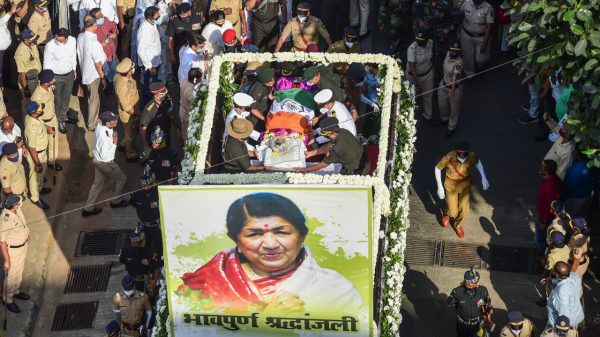
SONGS ONE BETTER THAN THE OTHER
Some of her gems which will keep Lata Mangeshkar’s memory alive for generations to come are: Aye mere watan ke logon / Zaraa aankhon mein bhar lo paani (this song, penned by Kavi Pradeep, and composed by C. Ramchandra, is said to have brought tears to the eyes of then prime minister Jawaharlal Nehru when she sang it on 27th January, 1963 in his presence, against the backdrop of the Sino-Indian war), Aaja re pardesi, Ek pyaar ka naghma hai, Barsaat mein hum se milein tum, Hawa mein udta jaaye mera lal dupatta malmal ka, Chup chup khade ho zaroor koi baat hai, Lara lappa lara lappa, Aayega aayega aayega aanewala aayega, Man dole mera tan dole, Pyar hua ikraar hua, Ramaiya vastavaiya, Eechak dana beechak dana, Aaja sanam madhur chandni mein hum tum, Ajeeb dastaan hai yeh / Kahan shuru kahan khatam, Yeh raat bheegi bheegi, Chadh gayo paapi bichhua, Dhoondho dhoondho re saajna, Do hanson ka joda bichhad gayo re, Allah tero naam, Jo vaada kiya woh nibhana padega, Main ka karoon Ram mujhe buddha mil gaya, Lag jaa gale, Naina barse, Kahin deep jale kahin dil, Jyot se jyot jagaate chalo, Sun le Bapu yeh paigham,Aaj phir jeene ki tamanna hai, Yeh samaa samaa hai yeh pyar ka, Tu jahan jahan chalega mera saaya saath hoga, Dil wil pyar vyar, Main toh bhool chali babul ka des, Chandan sa badan, Aa jaane jaan, Kaanton se kheench ke yeh aanchal, Gaata rahe mera dil, Piya toh se naina laage re, Lag jaa gale, Naina barse rimjhim rimjhim, Bindiya chamkegi, Inhi logon ne, Chalte chalte, Kahin deep jale kahin dil, Rahein na rahein hum / Mehka karenge, Inhi logon ne le lina dupatta mera, Thade rahiyo, Jai jai Shiv Shankar, Yeh raatein nayi purani, Salaam-e-ishq meri jaan, Main solah baras ki, Zindagi ki na toote ladi, Mere naseeb mein tu hai ke nahin, Tune O rangeele kaisa jadu kiya, Yeh kahaan aa gaye hum, Neela aasmaan, Ae dil-e-nadaan, Satyam Shivam sundaram, Zindagi har kadam ek nayi jung hai, Saagar kinaare, Ram teri Ganga maili ho gayi, Husn pahadon ka, Sun sahiba sun, Tum se milkar na jaane kyun, Zihale masti makun barabjish, Main teri dushman… dushman tu mera, Patjhad sawan basant bahaar, Saajan mera uss paar hai, Mere haathon mein nau-nau chudiyaan hain, Dil deewana bin sajna ke maane na, Kabootar jaa jaa jaa, O Ramji bada dukh deena tere Lakhan ne, Gori hain kalaaiyaan, Yaara seeli seeli, Morni bagaama bole, Kabhi tu Chhalia lagta hai, Tu mere saamne, Tu mujhe qubool, Dil huun huun kare, Didi tera devar deewana, Mehendi lagaa ke rakhna, Tujhe dekha toh yeh jaana sanam, Paani paani re, Dil toh pagal hai, Jiya jale, O Palanhaare, Kabhi khushi kabhi gham….
HUGE LEGACY
Lata Mangeshkar has sung songs in almost every Indian language. She was often referred to as the Queen of Melody, Nightingale of India, Voice of India, etc. She had also acted in a few films when she entered the film industry. It is said that years later, Raj Kapoor wanted to cast her in the lead role in Satyam Shivam Sundaram as the inspiration for the film was her story. However, she is said to have declined, after which the role went to Zeenat Aman. Lata Mangeshkar had also produced three Hindi films including Lekin, and one Marathi film. In the 1960s, she had scored music for five Marathi films.
HONOURS, AWARDS
Lata was honoured with the titles of Padma Bhushan, Padma Vibhushan and the Bharat Ratna. She had also been given the Dadasaheb Phalke Award by the government of India in 1989. In her long and chequered career, she won the National Award thrice, besides countless other awards. She was the first Indian to perform at the Royal Albert Hall in London in 1974. In 2009, she was awarded the title of Officer of the French Legion of Honour, which is the highest order of France. For a lady who was honoured on so many platforms and by so many countries and whom every music lover wished to meet, Lata Mangeshkar’s greatest regret in life was that she never had a chance to meet Michael Jackson whom she considered to be the best in the world of pop music.
CONTROVERSIAL NOTES
Controversies and Lata Mangeshkar went hand in hand. Whether it was for raising her voice against the proposed flyover on Peddar Road or, many years before that, for not singing with Mohammad Rafi for almost five years as he did not support her demand for royalties to singers, or for refusing to oblige Shankar-Jaikishan by singing the Rasik balma song at the Filmfare Awards function when they won the award for best music for Chori Chori, simply because Filmfare did not give awards to singers till then, or her tiff with S.D. Burman, Lata never shied away from controversies.
VENOMOUS ATTEMPT ON GOLDEN VOICE
It is believed that her cook mixed poison in her food in 1962, because of which her vocal cords were damaged. She did not sing for several months thereafter but once she returned to the recording room, there was no looking back.
There never was a singer like Lata Mangeshkar. Sadly, there never might be one in the future, too. She may have been 92 but her golden voice did not age till at least when she touched 75! May the nightingale of India now regale the Gods in heaven.


